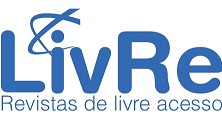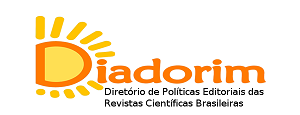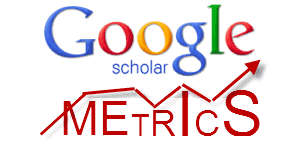ANALYSIS OF URBAN SOLID WASTE (USW) IN THE QUARANTA IGARAPÉ BASIN IN MANAUS-AMAZONAS
DOI:
https://doi.org/10.20873/rtg.v11n24p01-17Keywords:
Hydrography, Garbage, WasteAbstract
With population growth, the inappropriate use of spaces drives the environmental problem promoting the degradation of natural systems. Garbage is one of the environmental problems, despite the existence of the National Solid Waste Plan (PNRS), the disposal of this waste is still done in inappropriate places, such as water bodies, streets and culverts. This work aims to analyze the Urban Solid Waste (MSW) in the Igarapé do Quarenta watershed in the city of Manaus from secondary and primary data. In order to fulfill the objectives, fieldworks were carried out in the basin area to obtain identification of waste disposal areas. In addition, secondary data were obtained in order to quantify the waste disposal along the basin under study. The problem of garbage in the study area occurs in the valley bottom areas and by the populations residing on the banks of urban rivers, causing pollution, silting and obstruction of the natural flow of water causing flooding in periods of heavy rains.
References
BRASIL- Lei nº 12.305, de 2 de agosto de 2010. Institui a Política Nacional de Resíduos Sólidos; altera a Lei n° 9.605, de 12 de fevereiro de 1998; e dá outras providências.
Disponível em: <http://www.planalto.gov.br/ccivil_03/_ato2007-2010/2010/lei/l12305.htm>. Acesso em: 04 de out. de 2020.
DANTAS, E. M. Geografia da População, 2 ed, Natal: EDUFRN, 2011. 246p.
GIL, A. C. Métodos e técnicas de pesquisa social. 5.ed. São Paulo: Atlas, 1999.
GRANJA, V. Proposta de Gestão de Resíduos Sólidos Urbanos com enfoque em Educação Ambiental para o município de Tio Hugo – RS. 2011. 125f. Trabalho de conclusão, Universidade de Passo Fundo, 2011.
MONTE, M. J. M.; SOUZA, D. A.; COSTA, V. C. Aspectos relacionados ao controle de inundações no igarapé do quarenta, na cidade de Manaus, AM, Brasil. In: Congresso Técnico Científico da Engenharia e da Agronomia-CONTECC, Maceió – AL, 21 a 24 de agosto de 2018.
PEREIRA, U. A; ALEIXO, N. C. R. Os resíduos sólios urbanos como condicionante de doenças na cidade de Manaus – Am. Revista Geonorte, v.9, n.31, p.32-53, 2018.
PRSCS-RMM, Plano de Resíduos Sólidos e Coleta Seletiva da Região Metropolitana de Manaus, SEMA: Manaus, 2017. 48p.
MENEZES, M. T. Tratamento de resíduos sólidos, Rio de Janeiro: Instituto de Arquitetos do Brasil, 2014. 56p.
MUCELIN, C. A.; BELLINI, M. Lixo e impactos ambientais perceptíveis no ecossistema urbano. Sociedade & Natureza, Uberlândia, 20 (1), p. 111-124, jun. 2008.
SEGUNDO, R. F. Impactos do programa PROSAMIM para os ribeirinhos do Igarapé do Quarenta na cidade de Manaus. 2014. 96f. Mestrado em Processos construtivos e saneamento urbano, Universidade Federal do Pará, 2014.
SIMÕES, C. C. S. Breve histórico do processo demográfico. In: FIGUEIRA, A. H. (org.) Brasil: uma visão geográfica e ambiental do século XXI, Rio de Janeiro: IBGE, 2016. 435p.
SILVA, G. M.; ROCHA, M. Y. T; ALBUQUERQUE, A. R. C. Diagnóstico socioambiental da comunidade do Crespo, Manaus/Amazonas. Geoambiente on-line, n° 32, p. 1-14, 2018.
SILVA, G. M. Dinâmica do uso da terra na paisagem na microbacia do Igarapé do Quarenta, Manaus – AM. Revista Geonorte, v. 9, n. 33, p. 81-94, 2018.
SILVA, G. M.; ALVES, A. C.; SANTOS, M. Q.; SOUSA, K. C. Risco ambiental em um trecho da microbacia do Igarapé do Quarenta, Manaus-AM. Boletim Paulista de Geografia, nº 102, p. 100- 115, 2019.
SILVA, G. M.; ALVES, A. C.; SANTOS, M. Q. Dinâmica socioespacial e problemas urbanos na microbacia do igarapé do quarenta, Manaus – Amazonas, Revista Tocantinense de Geografia – online, v. 09, n. 19, p. 101-114, 2020. https://doi.org/10.20873/rtg.v9n19p101-114
TINOCO, M. R. L.; SOARES, J. M.; SOUZA, S. M. Crescimento populacional e sustentabilidade ambiental. Revista de trabalhos acadêmicos-campus Niterói, n° 2, p. 1-41, 2010.
VARQUES, V. Construções à beira de igarapés dificultam limpeza em Manaus. Em Tempo, Manaus, 23 de fev. de 2020. Disponível em < https://d.emtempo.com.br/amazonas/190866/construcoes-a-beira-de-igarapes-dificultam-limpeza-em-manaus>. Acesso em: 05 de out. de 2020.
Downloads
Published
How to Cite
Issue
Section
License
Revista Tocantinense de Geografia does not remunerate any author for the publication of their texts. The contents of the texts published in this journal are the responsibility of the authors.








.png)












